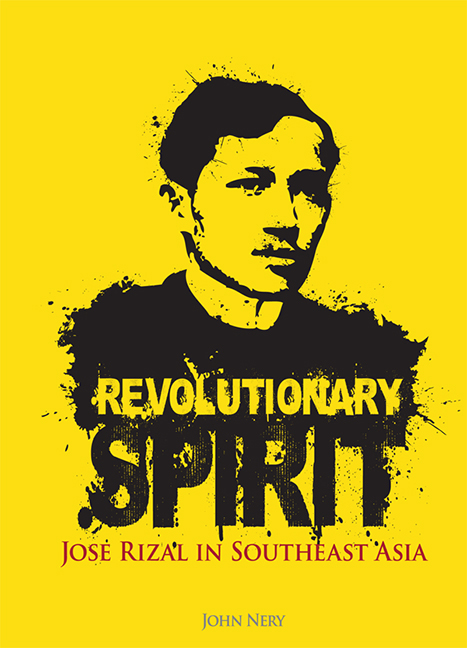Book contents
- Frontmatter
- Dedication
- Epigraph
- Contents
- Foreword
- Message
- Preface
- Acknowledgements
- INTRODUCTION The Uses of Error A Rizal Chronology
- 1 TURNING POINTS
- 2 “THE VERY SOUL OF THIS REBELLION”
- 3 DOCTOR RIZAL
- 4 “HALFBLOED”
- 5 “NO MARX OR LENIN”
- 6 UNDER THE SOUTHERN SUN
- 7 THE HOPE OF MILLIONS IN ASIA
- 8 “HIS NAME IS SWEET IN OUR MEMORY”
- 9 THE MYTH BUSTERS
- 10 “A GREAT HISTORICAL EXPERIMENT”
- Epilogue
- Appendices
- References
- Index
10 - “A GREAT HISTORICAL EXPERIMENT”
Published online by Cambridge University Press: 21 October 2015
- Frontmatter
- Dedication
- Epigraph
- Contents
- Foreword
- Message
- Preface
- Acknowledgements
- INTRODUCTION The Uses of Error A Rizal Chronology
- 1 TURNING POINTS
- 2 “THE VERY SOUL OF THIS REBELLION”
- 3 DOCTOR RIZAL
- 4 “HALFBLOED”
- 5 “NO MARX OR LENIN”
- 6 UNDER THE SOUTHERN SUN
- 7 THE HOPE OF MILLIONS IN ASIA
- 8 “HIS NAME IS SWEET IN OUR MEMORY”
- 9 THE MYTH BUSTERS
- 10 “A GREAT HISTORICAL EXPERIMENT”
- Epilogue
- Appendices
- References
- Index
Summary
Crayonpedia has a touch of the Indonesian genius for acronyms. An online study resource based on the Indonesian educational curriculum, it stands for Create Your Open Education Encyclopaedia and manifests a becoming sense of history; it was launched on the centenary of the founding of the Budi Utomo movement, in 2008.
In two and a half years, Crayonpedia has grown to over 6,800 pages of material. “Page” is used here in its online context; it means a discrete topic, regardless of length. The single page on the “Rise and Development of the Indonesian National Movement” is in fact an entire chapter, and would require a printout of well over a dozen pages.
The chapter begins with a schematic survey of the “internal” and “external” factors that led to the growth of nationalist consciousness in Indonesia. The section on the eight internal factors is followed by the section on the five external causes, those which in the words of the online module gave “dorongan dan energy” (encouragement and energy) to the nationalist movement: namely, the Japanese victory in the Russo-Japanese War in 1905, the growth of the Indian Congress Party, the Chinese nationalist movement, the rise of the Young Turks — and “Filipina di bawah Jose Rizal,” that is, the Philippines under Jose Rizal.
This sounds, more or less, like Sukarno's roll call of awakened nations, which we have heard a few times in earlier pages. And it is a view reflected, more or less, in the standard references. “The first signs of an awakening national self-consciousness began to show themselves in Java early in the [twentieth] century,” D. G. E. Hall writes in A History of Southeast Asia, his magisterial survey. “Such external influences as the Boxer Rising in China, the Filipino revolt against Spain, and the rise of Japan undoubtedly played their part” (Hall 1981: 790–791).
I say more or less, because other standard works appear to minimize the Philippine factor. For instance, the illuminating overview of “Nationalism and Modernist Reform” in the Cambridge History of Southeast Asia, by Paul Kratoska and Ben Batson, assumes a hierarchy of inspiration in assigning pride of place to Japan and China. “Japan, where the Meiji restoration was followed by a reformist movement which borrowed from abroad to defend indigenous traditions, inspired many political activists in Southeast Asia, notably in Vietnam and the Philippines.
- Type
- Chapter
- Information
- Revolutionary SpiritJose Rizal in Southeast Asia, pp. 213 - 230Publisher: ISEAS–Yusof Ishak InstitutePrint publication year: 2011

